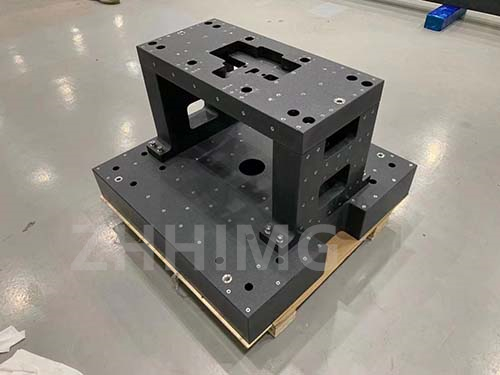The installation and commissioning of granite machinery mounts is a critical process in a variety of industrial applications, particularly in precision engineering and manufacturing. Granite mounts are favored for their stability, rigidity, and resistance to thermal expansion, making them ideal for supporting heavy machinery and delicate instruments. However, the successful implementation of these mounts requires a thorough understanding of installation and commissioning skills.
The first step in the installation process is to select a granite base that is suitable for the specific application. Factors such as size, load-bearing capacity, and surface flatness must be considered. Once the appropriate base is selected, the installation site must be prepared. This includes ensuring that the floor is level and can support the weight of the granite base and any equipment it carries.
During installation, the granite must be handled with care to avoid chipping or cracking. Proper lifting techniques and equipment, such as suction cups or cranes, should be used. Once the granite base is in place, it must be securely fastened to prevent any movement during operation.
After installation, commissioning skills come into play. This involves checking the flatness and alignment of the granite base using precision measuring tools such as a dial gauge or laser level. Any discrepancies must be resolved to ensure the base provides a stable platform for the machinery. Adjustments may involve shimming or re-leveling the base to achieve the desired specifications.
Additionally, regular maintenance and periodic inspections are essential to ensure your granite base remains in top condition. This includes monitoring for any signs of wear or damage and addressing them promptly to prevent operational issues.
In summary, the installation and commissioning skills of granite mechanical base are essential to ensure the reliability and accuracy of industrial operations. Mastering these skills can not only improve equipment performance, but also help improve the overall efficiency of the manufacturing process.
